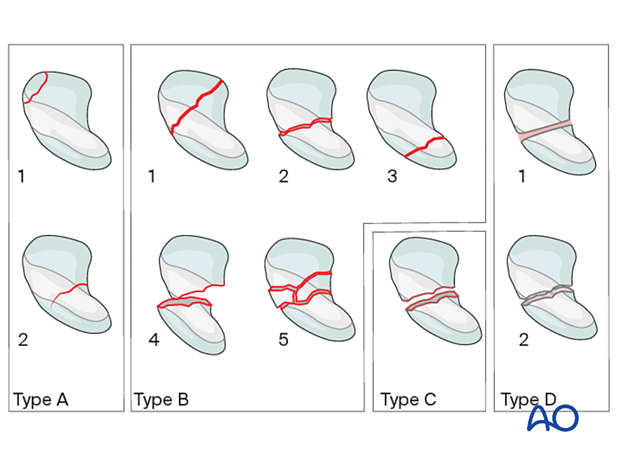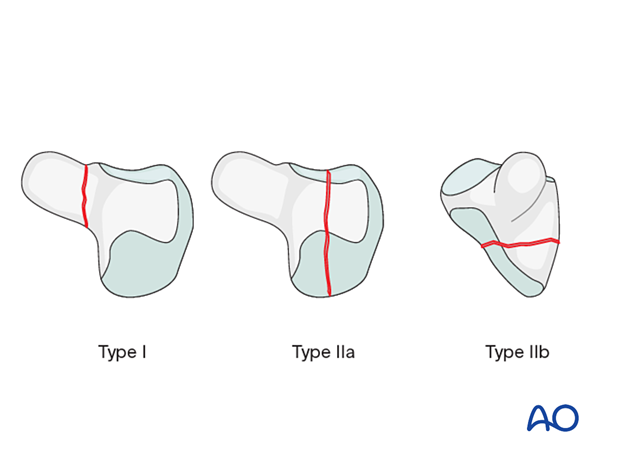Classifications for fractures of carpal bones
1. Herbert classification for scaphoid fractures
The Herbert classification is often used to describe scaphoid fractures. It is helpful when selecting the appropriate treatment.
A – acute stable (may be treated conservatively)
- A1 – fracture of the scaphoid tubercle
- A2 – nondisplaced crack of the wrist (incomplete fracture)
B – acute unstable (indicated for surgery)
- B1 – distal oblique fracture
- B2 – complete waist fracture
- B3 – proximal pole fracture
- B4 – fracture dislocation
- B5 – comminuted fracture
C – delayed union
D – established nonunion
- D1 – fibrous nonunion
- D2 – sclerotic nonunion (pseudoarthrosis)
- Nick G, Lasanianos NG, Doudoulakis KJ. Scaphoid Fractures. In: Lasanianos NG, Kanakaris NK, Giannoudis PV. ed. Trauma and Orthopaedic Classifications. A Comprehensive Overview. London: Springer-Verlag; 2015:107–113.
- Herbert TJ. The fractured scaphoid. St Louis: Quality Medical Publishing; 1990:51–67.

2. Hirano classification for hamate fractures
Hamate fractures are commonly classified after Hirano:
- Type I: fractures of the hamate hook
- Type II: fractures of the hamate body, subdivided in coronal and transverse fractures, IIa and IIb, respectively
Type IIa fractures are part of CMC fracture-dislocations. Type IIb fractures are rarely isolated and usually part of a greater arc injury.
- Hirano K, Inoue G. Classification and treatment of hamate fractures. Hand Surg 2005, 10: 151-157.














